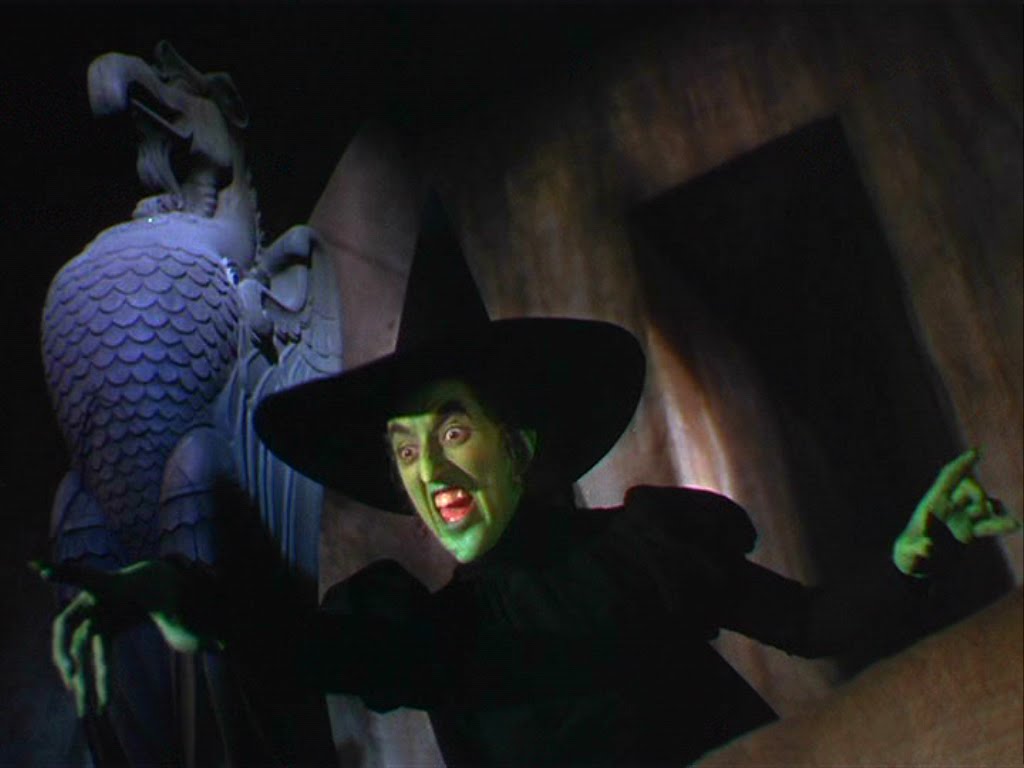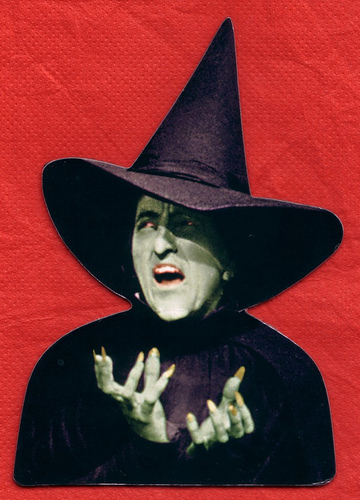


The only Munchkins to have their real voices recorded on set were the two who stand at the carriage and thank Dorothy for killing the witch so completely.
#Wizard of oz witch windows#
The studio originally wanted 300 little people, and to help pad out the numbers, they used eight to ten children in the background, waving out of windows in the village.ġ3. A total of 124 little people were cast as Munchkins, with heights ranging from 2’3” to 4’8”. MGM studio heads felt this fantasy would be too much for audiences of the day to accept, so the Kansas framework was developed, including the corresponding characters in reality which Dorothy dreams about.ġ2. The original book happens in reality with Oz as a real place. Later in the film, many shots of and lines from the Wicked Witch ( Margaret Hamilton) were removed because they scared children so badly in test audiences that some kids had to be literally carried out of the theater.ġ1. In particular, one deleted shot shows the tornado completely enveloping the farmhouse. Many shots were trimmed down or edited out of the film because they were too intense for families and children. The tornado special effect was so effective and successful that additional footage was used in 1943’s Cabin in the Waters and 1947’s High Barbaree.ġ0. Frank Baum.” Later, Baum’s widow confirmed that the jacket had been made for her late husband, and it somehow found its way onto the set.ĩ. On set, Morgan turned out one of the pockets to discover a label which read, “L. The jacket that Professor Marvel ( Frank Morgan) wears was chosen from a rack of wardrobe clothing. Additional roles were added to showcase a star performer, including Professor Marvel at the beginning, the Oz gatekeeper, the Carriage Driver, the Guard, and a deleted blackface character in the Kansas sequence.Ĩ. Ed Wynn was the first choice to play the Wizard, but he turned the role down because the script only had him in the very end as the Wizard himself and a doctor in Kansas. Judy Garland grew so fond of Terri that she wanted to keep her after production wrapped, but trainer Carl Spitz refused to sell her.ħ. Toto was played by a female cairn terrier named Terri, who coincidentally got her start in a the film Bright Eyes with Shirley Temple. It was Vidor’s idea to add camera movement to the song “Over the Rainbow,” which the studio tried to cut from the film several times before producer Arthur Freed demanded to keep it in.Ħ. The Kansas scenes were shot at the end of the production schedule, directed by King Vidor after MGM sent Fleming to “save” Gone with the Wind. Fourteen writers worked on the script in various capacities.ĥ. Later, as the tornado is approaching the Gale farm, Henry finds Hickory tinkering with the wind machine again.Ĥ. In the Kansas sequence, there are two deleted scenes in which Hickory ( Jack Haley) is working on a “wind machine,” which he describes as “having a real heart” (a nod to his upcoming character of the Tin Man). The film was then wrapped around Judy Garland, who had only debuted in features in 1936, a year before The Wizard of Oz was put into development.ģ. Temple was under contract with Fox, who would not release her, and some considered the role to be below her talents. The studio originally wanted Shirley Temple as Dorothy, but this was a short-lived hope. In fact, the only location footage in the entire picture are the shots of clouds rolling under the opening titles.Ģ. The entire film was shot on a studio set. The Wizard of Oz (1939)Ĭommentators: John Fricke (historian), with archival interviews of Barbara Freed-Saltzman, Margaret Hamilton, Ray Bolger, Jack Haley, John Lahr, Jane Lahr, Hamilton Meserve, Dona Massin, William Tuttle, Buddy Ebsen, Mervyn LeRoy, and Jerry Marenġ. The late Sidney Pollack serves as emcee for the commentary, introducing archival interviews with cast, as well as family members of deceased cast and crew. This commentary was included on the 2005 DVD release, which is also included on the 70th anniversary 2009 DVD and Blu-ray discs.

However, it was Victor Fleming’s musical rendition of the story that left the brightest mark on the cinema landscape. Frank Baum’s children’s book “The Wonderful Wizard of Oz,” the story had been made into a film previously (once as a silent film in 1925 and again as a short film in 1933). With the release of Sam Raimi’s CGI-heavy fantasy film Oz the Great and Powerful coming this weekend, it seems appropriate to look back in time more than 70 years to the release of one of the most influential films of all time: The Wizard of Oz.īased on L.


 0 kommentar(er)
0 kommentar(er)
